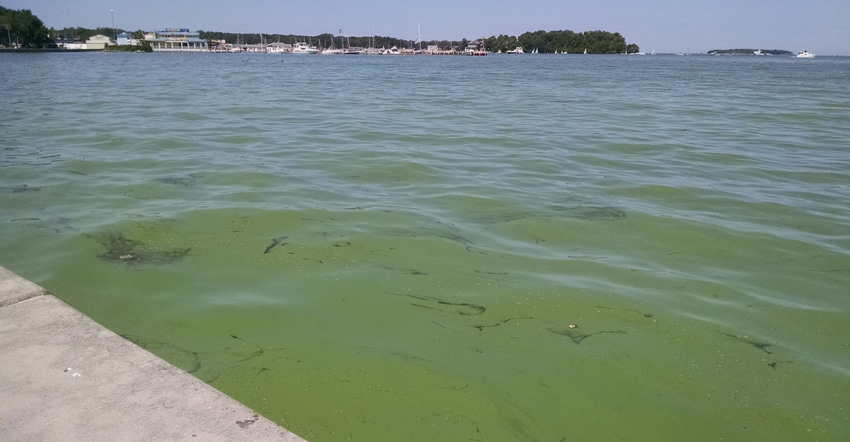September 3, 2019

Skepticism, more than anything else, is keeping farmers from changing how they apply fertilizer to their fields, according to a behavioral scientist at Ohio State University.
Many farmers question whether the conservation measures they are being asked to take, such as applying fertilizer underground rather than on the surfaces of fields, will actually improve water quality in Lake Erie, says Robyn Wilson, a professor in OSU’s College of Food, Agricultural, and Environmental Sciences (CFAES).
They also question whether they can carry out those measures on their farms, particularly small farms that typically have less equipment and fewer workers and financial resources than larger farms have.
So, offering farmers more evidence about the link between fertilizer runoff and the degraded water quality in Lake Erie — or even offering them funding to help pay for conservation measures — doesn’t necessarily inspire more farmers to change their ways, Wilson says.
“We’ve been spending a lot of time and money educating people about what the problems are, but where’s the evidence that it’s working?” Wilson says. “The thinking has been that if we all just better understand what problems we’re having, and what strategies might help those problems, then magically everyone will see the light and suddenly say, ‘Oh, I should be doing this instead.’”
Phosphorus is main problem
Experts say the harmful algal blooms plaguing Lake Erie are largely caused by phosphorus runoff from farm fields. Phosphorus, a nutrient needed by crop plants to grow, is present in fertilizers and manure.
The severity of the lake’s algal bloom this year is expected to be more than double last year’s bloom, but slightly less than the bloom in 2017, according to a National Oceanic and Atmospheric Administration report. Persistent rain this past spring is believed to be a major cause for the predicted size of this year’s bloom.
Among the farmers Wilson has surveyed, 60% to 80% report they would be willing to adopt new measures to try to reduce fertilizer runoff, but less than half of those surveyed actually do, she says. Wilson studies why that’s happening in her efforts to change the approach that’s been taken to convince more farmers to participate in sustainable measures.
“I think we have motivated people who can’t act on their motivation,” Wilson says. “There’s a group of farmers who would be willing to do it, but they’re facing challenges.”
Those challenges include not only the added expense and effort of adopting conservation measures, but also, lately, the weather.
More rainfall and more intense rain events in Ohio and across the United States increase the risk of fertilizer running off a field, into a nearby waterway, and eventually into Lake Erie or another large body of water. Also, rain has delayed the planting and harvesting of Ohio’s cash crops, corn and soybeans. Thus, farmers report that they run out of time in the growing season to plant cover crops, which are typically sown after harvesting cash crops, Wilson adds.
Similarly, the method of placing fertilizer underground rather than onto the surface of a field, which can significantly reduce fertilizer runoff, comes with challenges as well. The method requires expensive machinery or an attachment to a standard tractor, but such machinery or attachments are not easily available to most small farmers. It also takes twice as long to apply fertilizer underground than at the surface, and farmers might not have the time.
Work one on one
The most effective way to help farmers overcome these barriers is to work one on one with each farmer: going out to the farm, asking which practices they’re using, and suggesting conservation measures tailored to their particular farm operation, Wilson says.
“This isn’t about a bunch of lazy people who don’t care. They care. They just haven’t found a feasible way to do things,” she says.
Also, starting co-ops to rent out machinery for the subsurface placement of fertilizer could cause more farmers to try out the method.
Seeing results is also critical to convincing farmers that the extra time, effort and expense to put conservation methods in place is worth it. Farmers need to know that any practice they adopt will actually reduce nutrients flowing from their fields into waterways, Wilson says.
“We don’t give them any feedback. Is your soil health getting better? Is the local water quality getting better? We can’t say. We can just say, ‘Go do this thing.’”
Results that show farmers that their efforts are reducing runoff from their farms would go a long way toward motivating them to continue, Wilson says. The situation is akin to a person who is trying to lose weight by eating better and exercising more, she adds. He or she is more likely to stay on the new regimen if he or she can get on a scale regularly and see the pounds dwindle.
One way to offer such proof of results is to launch small, localized efforts to clean up the nutrients in a stream or lake; generate local support and participation in that effort; and share the results, Wilson says.
“People want to know: ‘I did X, and Y happened,’” she says. “They have to see that there’s a direct benefit.”
Source: OSU Extension, which is solely responsible for the information provided and is wholly owned by the source. Informa Business Media and all its subsidiaries are not responsible for any of the content contained in this information asset.
You May Also Like




